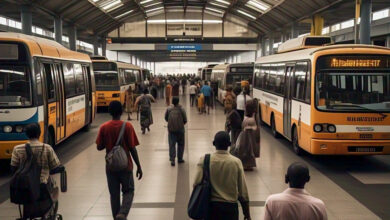Infrastructure Development in Zimbabwe: Unlocking Economic Potential

Zimbabwe’s economic growth is heavily reliant on infrastructure development. The country’s strategic location in Southern Africa makes it an essential hub for regional trade and commerce. However, years of underinvestment have left Zimbabwe’s infrastructure in dire need of upgrading. Moreover, the government is prioritising infrastructure development to unlock the country’s economic potential.
Transportation Infrastructure
Zimbabwe’s transportation network is crucial for facilitating trade and commerce. The country has made significant strides in upgrading its roads, railways and airports. The Mbudzi interchange currently under construction will improve traffic flow to and from surrounding areas. It will also reduce congestion and accidents which were rife the. Moreover, it will reduce travel time for commercial vehicles such as haulage trucks and cross border busses to neighbouring South Africa.
Also. the rehabilitation of the Harare-Beitbridge highway has improved connectivity with neighbouring countries. As at 6/3/2024 a total of 472.65km was completed with an outstanding 107.35km of rehabilitation to go. Moreover, the previous state of this road was riddled with potholes and uneven road terrain making it unpleasant for travellers. Therefore, the rehabilitation of this road will reduce travel time and make for a smoother ride.
Moreover, the Victoria Falls International Airport upgrade has increased tourism and trade volumes. This is improving the tourist city’s local economy.
Energy Infrastructure
Zimbabwe’s energy sector is facing significant challenges. Therefore, projects and investment aimed to improve power generation and distribution is vital. Moreover, ZIDA has this sector as one of its areas of investments. Furthermore, the strong domestic demand for reliable electricity and energy makes investing in this sector a low hanging fruit. The Kariba South Hydroelectric Power Station expansion will add 300 MW to the national grid. However, due to the recent drought it is currently not performing well hence the need to invest in other forms of renewable power generation.
Water and Sanitation Infrastructure
Furthermore, investments in water and sanitation infrastructure in Zimbabwe is below the expected levels. Harare, the capital city has areas that have not had council supply of water for years. Moreover, residents and business have resorted to drilling boreholes and buying water.
However, there is a glimmer of hope as the Kunzvi Dam is under construction, but this dam’s existence was first realised in the 90’s. One just hopes that this time around the dam will be completed to benefit citizens. The rest of Zimbabwe is no exception regarding potable water supply.
Also, the Infrastructure Development Bank of Zimbabwe working with ZINWA in this area. The bank is assisting in developing to bankability of the water and sanitation projects in Zimbabwe aimed at improving water supply in Harare, Chitungwiza, Bulawayo and the Matabeleland region.
ICT Infrastructure
Zimbabwe’s ICT sector has experienced rapid growth, driven by infrastructure development. The National Broadband Plan aims to increase internet penetration to 80% by 2025. Meanwhile, the construction of data centres and fibre optic networks has enhanced digital connectivity.
Challenges and Opportunities
Despite progress, infrastructure development in Zimbabwe faces challenges, including funding constraints, corruption and climate change. However, opportunities abound, such as Public-Private Partnerships (PPPs), regional cooperation and green infrastructure initiatives.
Conclusion
Infrastructure development in Zimbabwe is crucial for economic growth. Ongoing projects and investments have shown promise. Therefore, addressing challenges and leveraging opportunities will ensure sustainable progress.





